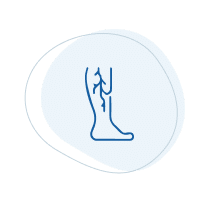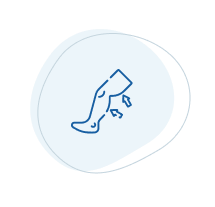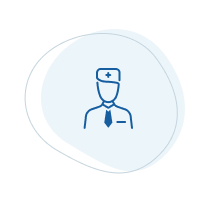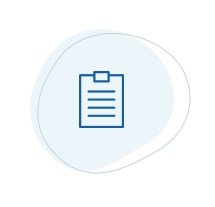Get Rid of Painful Varicose Veins and Start Loving Your Legs Again
- Feel Better About Your Appearance
- Endure Less Pain
- Minimally Invasive Treatments with a Higher Success Rate
- Vascular Ultrasound Technology
Get Rid of Painful Varicose Veins and Start Loving Your Legs Again
- Feel Better About Your Appearance
- Endure Less Pain
- Minimally Invasive Treatments with a Higher Success Rate
- Vascular Ultrasound Technology
Speak to a Specialist Vein Doctor in Sydney
Over 2,500 patients have trusted us already – leave us a message and one of our specialists will be in touch soon.
Speak to a Specialist Vein Doctor in Sydney
Over 2,500 patients have trusted us already – leave us a message and one of our specialists will be in touch soon.

Feel Better About Your Appearance
Having your varicose veins treated means you can get back to wearing whatever you want without having to worry about using a concealer when wearing shorts or dresses.

Endure Less Pain
If your varicose veins cause discomfort, having them treated can eliminate that pain.

Sleep Better at Night
Some studies suggest that restless leg syndrome is caused by varicose veins, so having your leg veins treated could help you sleep better at night.

Increased Mobility
Having veins treated can get rid of the source of the swelling that’s causing your diminished mobility and allow you to get back to what you liked to do before your varicose veins interfered with your lifestyle.
Minimally Invasive Treatments with a Higher Success Rate
Our minimally invasive procedures offer fewer risks, a quicker recovery, and higher success rates than open surgery.
98% Cure Rate
Following our non-surgical treatments patients are recovering much quicker with a cure rate of 98%
Vascular Ultrasound Technology
Onsite ultrasound service is available. It is a safe and effective way to assess the blood flow in the arteries or veins.
Experience Proven by 1000s of Patients
We've performed 1000s of endovascular procedures and transformed the lives of over 2500 patients
Expert Assistance by our Friendly and Trained Specialists
Our practice promotes a relaxed and friendly atmosphere where patients are provided with accurate information based on the latest research and technology
Everything Under One Roof
At Vein Doctors we’re committed to providing complete, integrated care under one roof. From diagnosis and treatment to prevention.

- Veins that are dark purple or blue in color
- Veins that appear twisted and bulging; often like cords on your legs
- An achy or heavy feeling in your legs
- Burning, throbbing, muscle cramping and swelling in your lower legs
- Worsened pain after sitting or standing for a long time
- Itching or discomfort around one or more of your veins
- Bleeding from varicose veins
- A painful cord in the vein with red discoloration of the skin…etc
If you are experiencing any of the above symptoms, you might suffer from varicose veins that require medical attention. Book a consultation at Vein Doctors Sydney and we will provide you the most advanced non-surgical varicose veins treatments.
ENDOVENOUS LASER ABLATION
RADIOFREQUENCY ABLATION
MEDICAL GLUE TREATMENT (VENASEAL)
ULTRASOUND-GUIDED FOAM SCLEROTHERAPY
AMBULATORY PHLEBECTOMY
VENOUS DUPLEX ULTRASOUND
Your Vein Screening

A Short Survey to Determine Your Potential Risk Factors
A short survey will help reveal your risk factors which could be contributing to your condition or may influence your treatment options

Ultrasound Screening
A brief ultrasound examination will guide us to your problem areas, locate faulty vein valves, and evaluate venous insufficiency to help determine the extent and nature of the problem.

A Brief Physical Assessment
Your doctor will perform a brief physical assessment of your legs to look for any visible signs of vein insufficiency and varicose or spider veins.

Post-Screening Discussion and Treatment Plan
Following your risk profile survey, ultrasound scan, and brief physical assessment, your doctor will meet with you to summarize the findings from the screening tools and advise you on the best treatment options for your needs.

Coverage Review
A member of our team is always available to provide general advice regarding medicare and private insurance coverage options for varicose and spider vein treatment

or better. Book a consultation today.

Dr McConnell is an Australian trained endovascular specialist and interventional neuroradiologist. He has extensive experience in both diagnostic and procedural ultrasound and performs over 500 endovascular procedures each year.
After graduating from Flinders University with a Bachelor of Medicine, and Bachelor of Surgery, Dr McConnell completed specialty training in radiology at Royal North Shore Hospital. He subsequently completed a fellowship in interventional radiology and a further two-year fellowship in neurointervention obtaining CCINR accreditation.

Varicose veins are easily visible through the skin and are either flat or raised and bulging. They can be flesh-coloured, purple, blue or red. Varicose veins are predominantly found within the legs, although they can occur anywhere on the body.
Varicose veins occur when valves that push blood through the veins to the heart are damaged or malfunction. Blood that does not travel to the heart pools and causes discoloration or the veins to bulge. As a result, there are several risk factors associated with varicose veins, including:
- Natural valve degeneration occurs as a person ages. The weakened valves cannot push the blood toward the heart.
- Blood volume increases and blood circulation to the legs and pelvis decreases during pregnancy. Changes in volume and circulation support the developing baby.
- Excess weight places pressure on veins, causing them to work harder to circulate blood.
- Sitting or standing for long periods. Remaining in the same position for several hours restricts blood flow.
- Family history. Certain genetic diseases and conditions affect vein functionality.
Changes in a woman’s hormone levels place women at a higher risk of developing varicose veins. These types of changes typically occur after menopause or when women take birth control.
Patients with varicose veins often experience no symptoms, aside from the discoloration and bulging veins. However, others will suffer a variety of symptoms, including:
- Itching and burning
- Muscle cramps near the affected veins
- Discomfort
Prolonged periods of sitting or standing will sometimes worsen varicose vein pain.
No, your body has deep, superficial, and perforator venous systems. Any of these systems can develop varicose veins and have a range of severity. Every patient has different anatomy, risk factors, and condition, so no varicose vein is identical to the next.
Varicose veins are common; they affect about 1 in 3 adults. However, certain risk factors can increase the chances of someone developing varicose or spider veins. People often develop varicose and spider veins in their legs and feet.
The condition generally worsens over time and if left untreated can cause symptoms such as leg pain, restless legs or leg itchiness. Extreme cases can lead to skin ulceration and venous blood clots.
No, any person at any age can develop varicose veins. Men and women in their 20s to 90s have had varicose veins. However, certain risk factors increase the chances of having them, like age, gender, lifestyle, and family history.
There is no cure-all to prevent varicose veins, but there are measures you can take to decrease the severity of symptoms. Eating healthy, exercising regularly, avoiding standing or sitting for long periods, maintaining healthy body weight, wearing compression stockings, and elevating your legs all help minimize varicose vein symptoms.
Decreased blood flow can cause several potentially serious complications, including:
- Affected veins are thin and damaged, so if the patient bumps or injures their leg, excessive bleeding can occur.
- Blood clots. Superficial thrombophlebitis, or clots that form just beneath the skin, is characterized by pain and swelling.
- Decreased blood flow causes blood to pool and a painful sore to form.
- Varicose eczema. Red, flaky, irritated skin can crust over and blisters form at the affected area.
- Chronic venous insufficiency. Decreased blood flow disrupts the skin and blood’s ability to exchange waste, oxygen, and nutrients.
Deep vein thrombosis, or DVT, is a serious condition that occurs when a blood clot forms in the leg. In fact, DVT is very painful. Furthermore, without immediate treatment, a blood clot can travel to the lungs. A blood clot in the lungs is a life-threatening condition known as pulmonary embolism.
Your doctor will perform a physical examination and ask about any pain, swelling, or other symptoms you’re experiencing. Next, they will order an ultrasound test if they suspect you have a blood clot. Alternatively, your doctor may suspect you have other complications and order an ultrasound as a result.
Symptoms may or may not be visible. An ultrasound allows a doctor to examine the major veins inside the leg to check for venous insufficiency or varicose veins under the skin. The non-invasive exam allows the healthcare provider to detect the source of the vein issue, which is critical to proper treatment.
- Sclerotherapy is a minimally invasive treatment option performed by a vein specialist. It involves the injection of a solution (sclerosant) into the vein causing it to collapse and eventually disappear.
- Endovenous laser ablation and radiofrequency ablation involves inserting a catheter and administration of a heat source to the diseased vein.
- A relatively new treatment for varicose veins is Medical Glue Treatment (VenaSeal). This involves the injection of a special medical-grade glue into the diseased vein, which essentially seals the vein shut.
- Ambulatory phlebectomy is an outpatient surgical procedure removing the visible, bulging, and diseased veins.
- Compression stockings are a type of hosiery that is worn to improve blood flow and reduce the risk of developing varicose veins. Compression stockings are available in a variety of compression levels, depending on the amount of pressure required for your particular condition
Heat from the laser in the form of light closes and shrinks the varicose vein. The laser causes scar tissue to form within the blood vessel, which seals off the vein. Blood then finds nearby veins to flow through.
A microphlebectomy or ambulatory phlebectomy is when a healthcare provider makes tiny incisions and removes the veins. The procedure uses only local anesthetic and requires no stitches. A phlebectomy is an in-office procedure that only takes about an hour.
Varicose veins are common in pregnant women. However, if pregnant, you should not have elective vein treatments until after you finish breastfeeding. Remember that varicose veins during pregnancy typically resolve on their own after giving birth without any treatment.
- Phone Us:
-
(02) 9023 9970
(02) 9023 9973 (Fax) - Hours:
-
Monday 8:30 am – 5pm
Tuesday 8:30 am – 5pm
Wednesday 8:30 am – 5pm
Thursday 8:30 am – 5pm
Friday 7:30 am – 3:30 pm
Saturday Closed
Sunday Closed - Email:
- info@veindoctorssydney.com
- Address:
- Suite 503, 39 East Esplanade, Manly NSW 2095
- Phone Us:
-
(02) 9023 9970
(02) 9023 9973 (Fax) - Hours:
- Wednesday 8:30 am – 5pm, with 4pm being the last available appointment
- Email:
- info@veindoctorssydney.com
- Address:
- Suite 3, Level 2, North Shore Health Hub, 7 Westbourne Street, St Leonards, 2065

- 8:30am – 5pm Tuesday, Wednesday, Friday
- Suite 503, 39 East Esplanade, Manly NSW 2095


